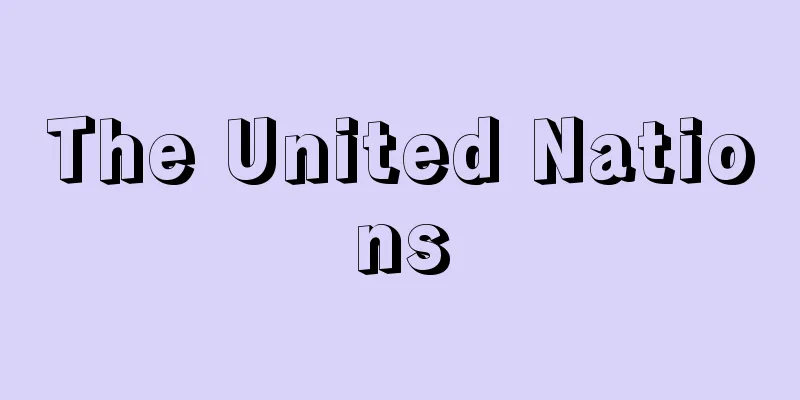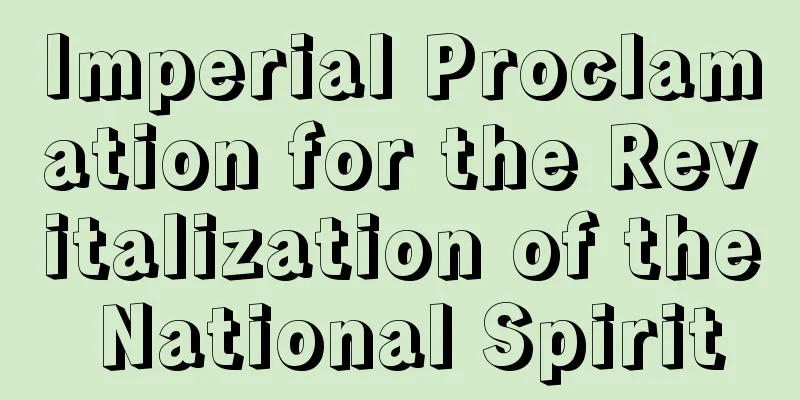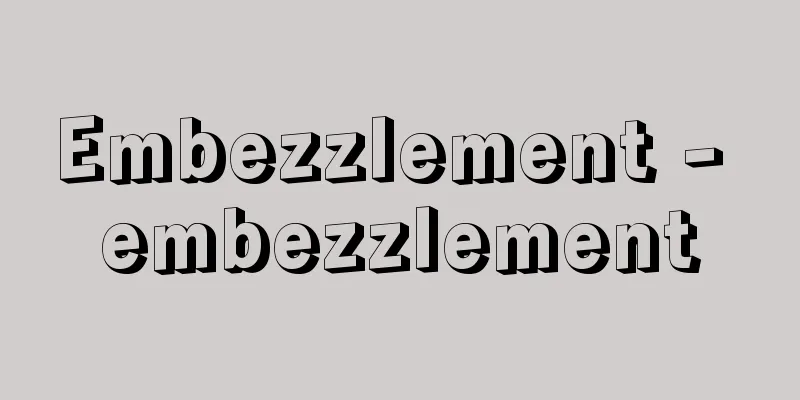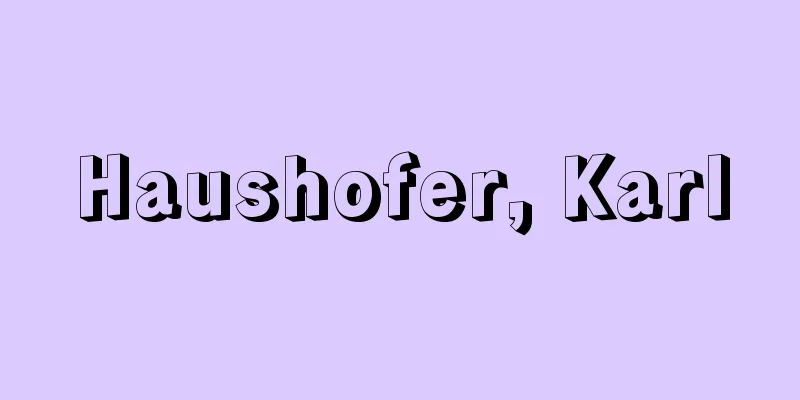The United Nations

|
The United Nations (hereafter referred to as the UN) was established immediately after the Second World War, succeeding the League of Nations, and is a universal peace organization whose main purpose is to maintain international peace and security. In general, the name refers to the UN organization (headquarters) established under the Charter of the United Nations, but it can also refer to the entire UN family, including the specialized agencies that cooperate with the organization in accordance with the procedures set out in the Charter. The UN is a so-called universal international organization that is open to the whole world and has a wide range of purposes, but at the same time it is a collection of sovereign states, and each member state has equal sovereignty. Therefore, the UN is not an organization with strong control like a world state. Since its establishment, due to the development and transformation of the international environment, its organization and functions have gradually expanded and undergone significant changes. [Saito Shizuo and Kurokami Naozumi] EstablishedIn October 1943, the issue of establishing a peacekeeping organization after World War II was formally discussed at a conference of the foreign ministers of the United States, the United Kingdom, and the Soviet Union held in Moscow. As a result, the four countries, including these three countries and China, issued the Moscow Joint Declaration, which stated that "we recognize the necessity for the maintenance of international peace and security of a universal international organization based on the principle of sovereign equality of all peace-loving nations," making clear the intention of the Allied powers to establish a new organization. The following year, in 1944, representatives of the four countries met in Dumbarton Oaks, USA, to work out a concrete plan for the new organization, which resulted in the Dumbarton Oaks Proposal. This was the "Proposal for the Establishment of General International Organization," and this proposal became the basis for today's United Nations Charter. Furthermore, at the Yalta Conference held in February 1945, the leaders of the United States, the United Kingdom, and the Soviet Union reached an agreement on outstanding issues such as the voting method of the Security Council and the trusteeship system. In April of the same year, a general conference of the Allied Powers was held in San Francisco, bringing together representatives from 50 countries. After two months of deliberation, the above-mentioned Dumbarton Oaks proposal was amended and added to to create a draft charter. This draft was signed by all 50 participating countries on June 26 of the same year, and on October 24, the required number of ratifications was met, and the United Nations was officially launched. October 24 is commemorated every year as "United Nations Day," and various events are held around the world. The countries that were members at the time of the launch are called the original member states. Poland was unable to attend the conference because a new government had not yet been formed, but was added to the original member states, bringing the total to 51. Neutral countries, former enemy countries including Japan, and Spain, which was ruled by a government that had received support from former enemy countries, were not included. The United Nations, which was established through the above process, was built on the initiative and privileges of the five great wartime powers (the United States, the United Kingdom, the Soviet Union, China and France) and held its first General Assembly in London on January 1, 1946. [Saito Shizuo and Kurokami Naozumi] Features at the time of launchThe most important feature of the United Nations is its emphasis on the former Allied Powers. At the time of its establishment, as mentioned above, many countries were excluded from being original member states, and the United Nations was formed from the former Allied Powers. Among them, the five major powers were given special privileges (veto power) as permanent members of the Security Council. The second feature is that, despite this, a large number of countries, 51 in number, including the five major powers, including the United States and the Soviet Union, were members from the beginning. The third feature is that, respecting the lessons of the League of Nations, it eliminated its shortcomings of its European character, namely, the Eurocentrism of member states, legalism in its activities, and excessive emphasis on procedures, and instead emphasized universal membership and practical handling, and changed the unanimous system to the principle of majority rule. Finally, in addition to the League of Nations' objective of maintaining peace and security, the United Nations added international cooperation in the fields of economy, society, and human rights as an independent objective. [Saito Shizuo] Major InstitutionsThe United Nations consists of six main organs: the General Assembly, the Security Council, the Economic and Social Council, and the Trusteeship Council, the International Court of Justice, and the Secretariat (Article 7 of the Charter). In addition to these main organs, the United Nations may establish subsidiary organs. [1] General Assembly The highest of the major organs is the General Assembly, which discusses all aspects of the UN's functions and can make recommendations to member states and the Security Council. The General Assembly is composed of all UN member states (193 countries as of August 2011). Decisions of the General Assembly are made by a majority of the member states present and voting, and on important issues by a two-thirds majority. The General Assembly (regular session) is to be held once a year (starting on the third Tuesday of September), but a special session can be held if necessary (Article 20 of the Charter). In addition, when the Security Council has failed in the discharge of its primary responsibility for the maintenance of international peace and security, an emergency special session can be held within 24 hours of the request of the Security Council (by a majority of nine members) or of the member states (by a majority) when the General Assembly is not in session, in order to recommend collective measures to maintain or restore international peace and security (according to the Consolidated Resolution for Peace adopted on November 3, 1951). [2] Security Council The Security Council is the body primarily responsible for maintaining international peace and security. Since UN member states must accept and implement the decisions of the Security Council, it has stronger authority than the General Assembly to carry out this responsibility. The Council is composed of five permanent members (the United States, the United Kingdom, Russia, France, and China) and non-permanent members (six at the start, six more in 1965, and ten in 2010. They serve two-year terms but cannot be re-elected). Decisions of the Council are made by a vote of nine members (any member) on procedural matters, and by a vote of nine members, including the concurring vote of the permanent members, on other matters. Therefore, when deciding on substantive matters, a vote against by a permanent member is considered a veto (however, it is an established practice that abstention or absence by a permanent member is not considered an exercise of a veto). [3] Economic and Social Council The Economic and Social Council is authorized to study, report, and propose issues on international economic, social, cultural, educational, and health problems, and to make recommendations to the General Assembly, the UN member states, and the relevant specialized agencies. The Council also has the power to enter into agreements to establish cooperation with specialized agencies and to coordinate their activities. It also has the power to consult with and make arrangements for NGOs (non-governmental organizations). The Council is composed of 54 member states (as of 2010). Decisions are made by a majority of the member states present and voting. In today's international relations, where economic and social issues are becoming increasingly complex, the role of the Council is extremely important, but it does not have the same strong authority as the Security Council, and the expansion of its subsidiary bodies has made it difficult to coordinate its activities. There is a growing demand for the Council to deliberate on increasingly important issues and to upgrade its representatives, and it is hoped that the reform will produce results soon. [4] Trusteeship Council The Trusteeship Council is the body that supervises the governing states of the trust territories. It is composed of (1) the member states administering the trust territories, (2) the permanent members of the Security Council that are not administering states, and (3) the other member states elected by the General Assembly for three-year terms (as many as are necessary to divide the total number of members equally between administering and nonadministrating states). This council has been operating based on the trusteeship agreements that were created to deal with the former mandated territories, but since all 11 territories under its jurisdiction became independent in 1994, with Palau being the last, its functions are considered to have been largely terminated. As a result, the Trusteeship Council has revised its procedures to meet only when necessary. [5] International Court of Justice The International Court of Justice, which succeeded the Permanent Court of International Justice during the League of Nations era, is the principal judicial organ of the United Nations, consisting of 15 judges (with nine-year terms). The Court functions in accordance with the Statute of the International Court of Justice, which is an integral part of the Charter of the United Nations, and to which all United Nations member states are parties. All United Nations member states must comply with its decisions in any case to which they are a party. The General Assembly, the Security Council, or any other United Nations organ or specialized agency, with the authorization of the General Assembly, may request an advisory opinion from the Court on any legal question. Such advisory opinions are not legally binding. [6] Secretariat The Secretariat is an administrative and clerical body headed by the Secretary-General (appointed by the General Assembly on the recommendation of the Security Council). The Secretary-General oversees administrative functions, such as attending each meeting, carrying out the tasks entrusted to him, and submitting an annual report. At the same time, the Secretariat is also an important political body, drawing the attention of the Security Council on issues of international peace and security and submitting an annual report to the General Assembly. Past Secretaries-General have included Trygve Ly, Dag Hammarskjöld, U Thant, Kurt Waldheim, Javier Pérez de Cuéllar, Boutros Boutros Ghali, Kofi Annan, and Ban Ki-moon. The staff of the Secretariat are international officials, and their status is guaranteed by the Charter. [7] Subsidiary Organs The General Assembly and each Council are permitted to set up subsidiary organs. In the General Assembly, these include the Human Rights Council (UNHRC), the Office of the United Nations High Commissioner for Refugees (UNHCR), the United Nations Development Programme (UNDP), and the United Nations Environment Programme (UNEP), while in the Security Council, these include the International Criminal Tribunal for the Former Yugoslavia (ICTY) and the International Criminal Tribunal for Rwanda (ICTR). In addition, under both the General Assembly and the Security Council, there is the UN Peacebuilding Commission (PBC). In the Economic and Social Council, there are functional committees such as the Commission on Narcotic Drugs and the Commission on Sustainable Development, as well as regional committees (five regions). [8] Specialized Agencies The specialized agencies are the following 19 international organizations (as of September 2010): International Labor Organization (ILO), Food and Agriculture Organization of the United Nations (FAO), United Nations Educational, Scientific and Cultural Organization (UNESCO), World Health Organization (WHO), International Civil Aviation Organization (ICAO), Universal Postal Union (UPU), International Telecommunication Union (ITU), World Meteorological Organization (WMO), International Maritime Organization (IMO), International Monetary Fund (IMF), World Bank Group (International Bank for Reconstruction and Development (IBRD), International Development Association (IDA), International Finance Corporation (IFC), Multilateral Investment Guarantee Agency (MIGA), International Centre for Settlement of Investment Disputes (ICSID)), World Intellectual Property Organization (WIPO), International Fund for Agricultural Development (IFAD), United Nations Industrial Development Organization (UNIDO), and World Tourism Organization (UNWTO). The International Atomic Energy Agency (IAEA) is classified as a specialized agency, but by its nature it is not included in the specialized agencies because it has relations not only with the Economic and Social Council but also with the General Assembly and the Security Council. The World Trade Organization (WTO) is also similar to a specialized agency, but no cooperation agreement has been concluded between the two organizations. [Saito Shizuo and Kurokami Naozumi] History since its establishment and current situationSince its inception, the United Nations has overcome many challenges to reach the present day, and in the process, it has transformed in a direction different from that envisaged in the UN Charter. The basis for this transformation is the mixture of conflict and cooperation in East-West relations since the organization's inception, as well as the change in the balance of power within the UN due to an increase in membership from the Third World. Since the collapse of the Cold War structure up to the present day, these changes have led to the rise and fall of the roles of the UN's major agencies, and at the same time, have brought about a growing momentum for organizational reform. [1] East-West relations The East-West cooperation that had been maintained throughout World War II began to waver soon after the founding of the United Nations, when the Soviet Union used its veto for the first time to demand the withdrawal of foreign troops from Lebanon, Syria, and Greece. In response to this, the Truman Doctrine was announced in 1947, and the Marshall Plan was established, which led to the Cold War. This Cold War period lasted until Stalin's death in 1953, and both East and West tried to use the UN to their own advantage, but the excessive use of vetoes paralyzed the UN. After Stalin's death, a period of peaceful coexistence began, which was followed by the so-called period of detente between the United States and the Soviet Union, and the UN came to be managed jointly by the United States and the Soviet Union. [2] Large-scale accession of Third World countries In 1955, while the Cold War structure was still continuing, 16 emerging Asian and African countries succeeded in joining the United Nations under the slogan of anti-imperialist and anti-colonialism at the Bandung Conference. Since then, new accessions from the Third World continued, and the proportion of the total number of member countries from the Third World increased to 35% (at the end of 1956) and 50% (at the beginning of 1964), and today it exceeds two-thirds. The rise of Asian and African powers in the UN, supported by strong nationalism and non-alignment, naturally brought about a change in the balance of power in the UN under the Western European system. Moreover, the Soviet Union and China, which had newly occupied a seat in the UN, supported them, and the United States and other Western countries began to feel frustrated by the power of their numbers. This meant that the balance of power in the UN, which had been led by the United States and the Soviet Union, became multipolar and was no longer at the disposal of the superpowers. [3] The rise and fall of the role of the UN's major organs During the first decade of the UN's history, when East-West relations were in the midst of the Cold War, the Security Council's functions were paralyzed and the role of the General Assembly increased, but the decade that followed saw the Secretary-General's role in security being strengthened, and the decade after that could be said to have been a period in which the weight of the Security Council increased, reflecting the attitude of Western Europe, which wanted to avoid the influence of the growing power of the Third World in the General Assembly. Good examples of this are the ignoring of General Assembly resolutions on the Middle East and South African issues, and the frequent use of veto power in the Security Council, including by the United States. [4] Revitalization of the Security Council Since the end of the Cold War, the Security Council has been functioning, and the UN is moving in a new direction. Following the Gulf Crisis in the early 1990s, the Security Council began to authorize multinational forces and regional organizations to take enforcement measures under Chapter VII of the UN Charter. In addition, civil wars have become more frequent in various places, and the number of peacekeeping missions deployed has increased dramatically. Furthermore, in the report "Agenda for Peace" submitted by UN Secretary-General Boutros Ghali in 1992, the importance of so-called peacebuilding, which supports post-conflict reconstruction, as well as conflict prevention and peacekeeping activities, has been emphasized. After that, the Peacebuilding Commission (PBC) was established, and in addition to peacekeeping activities, new activities called UN Political and Peacebuilding Missions have been carried out in post-conflict areas. In addition, as a way of establishing legal order through judicial institutions in post-conflict areas, the International Criminal Court was established under the Security Council to try violations of international humanitarian law in the civil wars in Yugoslavia and Rwanda in the 1990s. [5] Growing momentum for reform During Secretary-General Annan’s term (1997-2006), important documents were adopted at major turning points, such as the “United Nations Millennium Declaration” at the turn of the century and the “World Summit Outcome Document” on the 60th anniversary of the founding of the UN. These documents reaffirmed the UN’s goals and principles, and included many proposals in all fields of activity, and Annan actively promoted UN reform. The report “Renewing the United Nations” of July 1997 was described as the most comprehensive and daring since the UN’s founding, incorporating innovative ideas such as the creation of a new Deputy Secretary-General, the consolidation and abolition of departments, and a drastic reduction in staff. The September 2002 report stated the purpose of “strengthening the UN,” and decided to establish a Human Rights Council, and also proposed reform of the Secretariat. Furthermore, in March 2006, a report titled “Investing in the United Nations” presented a framework and specific proposals for UN reform. Today, the United Nations faces cross-border crises and challenges in areas such as the environment, public health and human security, and Ban Ki-moon, who succeeded Annan as Secretary-General, has also embarked on reforms. [Saito Shizuo and Kurokami Naozumi] Institutional DevelopmentsIn the face of a complex international environment, the United Nations seems to have reached a deadlock in terms of both structure and function, but various breakthroughs have been attempted in the system. In addition to the above-mentioned "Uniting for Peace," the following are some of the more important ones: [1] Adoption of consensus in decision-making In the United Nations, decisions are generally made by voting. However, when voting is used, the proposal is put to a vote without gaining wider support, leading to a large split in the pros and cons, which not only leaves a grudge later, but often results in the decision not being implemented. In the consensus system, instead of voting, the chair or other person declares that they would like to adopt the proposal if there are no objections, and takes the place of a vote. Sufficient prior consultation is required for a consensus proposal to be established. Consensus is different from unanimity, as it does not necessarily satisfy everyone, but since it is a consensus reached by not opposing it, it is easier to implement, and better decisions may be made after the consensus is reached. Therefore, it can be said that the consensus system has become established as a decision-making method that replaces voting. [2] Development of peacekeeping operations The United Nations failed to organize a proper UN army due to the Cold War, but instead deployed peacekeeping operations (PKOs) and were able to play an important role in peacekeeping. PKOs are preventive police actions that, based on the recommendations of the Security Council or the General Assembly, do not use force but intervene between the parties to a conflict to establish a ceasefire and maintain public order, thereby preventing the spread and recurrence of war. Therefore, they are different from military actions such as preventing aggression or imposing military sanctions. There are two types of PKOs: those that secure a ceasefire with weapons and those that are unarmed observer groups. After the Cold War, large-scale and comprehensive PKOs with comprehensive objectives, such as election monitoring and civilian police functions in addition to the traditional separation of forces and ceasefire monitoring, were successful, such as the United Nations Transitional Authority in Cambodia (UNTAC) that was dispatched to Cambodia in 1992. On the other hand, interventions that were armed and without the consent of the parties to the conflict, such as the Second United Nations Operation in Somalia (UNOSOM II), which was dispatched to Somalia in 1993 under the UN Secretary-General Bin Laden's report "Agenda for Peace," ended in failure. Today, PKOs with strengthened self-defense capabilities are being dispatched under Chapter 7 of the Charter, and hybrid operations in cooperation with the military forces of regional organizations, such as the United Nations Joint African Union Mission in Darfur, Sudan (UNAMID), are also seen, ushering in a new era for PKOs. [3] Importance of NGO activities The United Nations, an organization of sovereign states, recognizes the value of NGO activities and devotes an article to them in its Charter (Article 71). Attention has come to be paid to NGOs because of their enormous increase in number and their growing political importance, and because advances in communication technology have led to increased cross-border intergovernmental activities in the economic and social fields. The United Nations recognizes the special status of these organizations and has sought their cooperation in UN activities. NGOs that have a consultative relationship with the Economic and Social Council, one of the UN's main organs, are generally called UN NGOs. In recent years, the UN often refers to NGOs as civil society. [Saito Shizuo and Kurokami Naozumi] Security Council ReformAfter the Cold War, seats on the Security Council were smoothly transferred from the Soviet Union to Russia, and during the Gulf Crisis, the Security Council was able to function with the consensus of the five major powers. This aroused distrust among other member states about the domination of the Security Council by the major powers, and it became an opportunity to reconsider the composition of the Security Council. Discussions on reorganization began at the General Assembly in 1991, and a Working Group on Security Council Reorganization was established in December 1993. The main issues at issue in the reform process were (1) the scope of the expansion of the Security Council and (2) the issue of veto power. In March 1997, the Working Group put forward a proposal (known as the "Lazali Draft" after its chairman) that would have expanded the Security Council to five permanent members (two of which should be developed countries) and that the new permanent members would not be allowed to veto. For Japan and Germany, as well as the regional powers Brazil and India, permanent membership was on the horizon, but in October of the same year, the Lazali Draft was not adopted due to opposition from Italy, Canada, Egypt, Mexico, Pakistan and other countries. Following the September 11, 2001 terrorist attacks on the United States, Secretary-General Kofi Annan proposed in September 2003 at the General Assembly the establishment of a "High-Level Panel" to consider reforms to deal with new threats to the international community. The Panel submitted its report in December of the following year. It proposed two measures: Plan A, which called for an increase of six permanent members (without veto power) and three non-permanent members (two-year terms), and Plan B, which called for an increase of eight semi-permanent members (four-year terms, eligible for reelection) and two non-permanent members. Japan, Germany, Brazil, and India (G4) worked together to promote Plan A and negotiated with the African Union (AU), but it took time, and reform of the Security Council hit a snag. [Naozumi Kurokami] United Nations FinancesThe UN regular budget is drawn up every two years. In 2010-2011, it was about $5.2 billion. The UN's expenses are covered by member states' assessments. Member states pay the assessments according to the assessment percentages determined by the General Assembly on the advice of the Assessment Committee, which is made up of 18 members appointed by the General Assembly and serving in their personal capacity. The assessment percentages are determined based on the gross national income of the member states, and are revised in principle every three years. As of 2010, the top five countries are the United States (22%), Japan (12.5%), Germany (8.0%), the UK (6.6%), and France (6.1%). China, a permanent member of the Security Council, is at 3.1%, and Russia is at 1.6%. In addition to the regular budget, the UN also has voluntary contributions, other special accounts, and trust funds. The expenses of peacekeeping operations are covered by a different assessment method. As of 2010, the United States was responsible for 27.1% of the total, followed by Japan at 12.5%, the UK at 8.1%, Germany at 8.0%, and France at 7.5%. [Naozumi Kurokami] The United Nations and JapanShortly after regaining its independence after the war, Japan applied to join the United Nations on June 23, 1952. However, amid the fierce conflict between the United States and the Soviet Union, the Soviet Union used its veto to block the membership of any country supported by the United States, including Japan. In 1955, a proposal for the membership of 18 countries, including Japan, was presented, but because the Nationalist government (Republic of China) opposed the membership of the Mongolian People's Republic, the Soviet Union vetoed only Japan, and Japan, along with Mongolia, missed the opportunity to join. In the end, Japan's membership was realized in December of the following year, 1956, after negotiations for the normalization of diplomatic relations between Japan and the Soviet Union were concluded. Before joining the United Nations, Japan had already joined the International Court of Justice and all of the specialized agencies. As a peaceful nation, Japan has taken a stance that places importance on the United Nations and has maintained that stance to this day. Immediately after joining the United Nations, the Japanese government, in accordance with the fundamental diplomatic goal of establishing and maintaining peace based on freedom and justice, set out three principles as the basis of its diplomatic activities: a UN-centered approach, cooperation with liberal countries, and maintaining its position as a member of Asia. Today, Japan has frequently been elected as a non-permanent member of the Security Council and the Economic and Social Council, and its contribution rate has gradually increased, becoming the second highest after the United States. However, due to the principle of its constitution, Japan cannot participate in UN activities that involve the use of military force, and has refrained from cooperating with PKOs other than by covering expenses. Since the dispatch of the Self-Defense Forces to Cambodia (UNTAC) in 1992, Japan has begun to send personnel, including personnel from the Self-Defense Forces, but Japan's contribution in terms of personnel remains low. One issue in the Charter that concerns Japan is the issue of deleting the former enemy states clause. Although there is no explicit explanation in the UN Charter, the term "former enemy states" that were at war with the Allied Powers during World War II appears in three places: Article 53, Article 77, paragraph 1, subsection b, and Article 107. These provisions are collectively called the former enemy states clause. Since the speech of Foreign Minister Aichi Kiichi at the General Assembly in 1970, Japan has consistently advocated the deletion of these provisions, arguing that there is no room for such provisions to be applied to Japan, which had returned to the international community after the war. Regarding this issue, the General Assembly passed a resolution on the report of the Special Committee on the Charter of the United Nations by a majority vote at the 49th General Assembly in 1994, which included a consideration of deleting the clause, and the following year, the General Assembly expressed the intention to begin the procedure of amending the Charter to delete the former enemy states clause at the earliest appropriate time in the future, based on Article 108. However, since discussions on UN reform, including reform of the Security Council, have begun at the same time, it is expected that the amendments will be made all at once in line with future amendments associated with UN reforms. [Saito Shizuo and Kurokami Naozumi] "Saito Shizuo, Introduction to the United Nations, 3rd revised edition (1981, Shin-Yudo)" ▽ "Saito Shizuo, New Trends in the United Nations, revised and expanded edition (1984, Tokyo Shin-Yudo)" ▽ "Kiriyama Takanobu et al. (eds.), International Organizations, 4th edition (2009, Sekaishisosha) " ▽ "Akashi Yasushi, The United Nations: History and Prospects (Iwanami Shinsho)" ▽ "Kitaoka Shinichi, The Political Dynamics of the United Nations: Where is Japan? (Chuko Shinsho)" [Reference items] | | | | | | | | | | | Development Fund| | | of Nations|United Nations |United |United Nations | | | | | | | | | [Complementary Material] | |A 39-story office building facing the East River on Manhattan Island. Other facilities include a conference center, the United Nations General Assembly Hall, and a library. It is one of the symbols of the international city of New York. New York, USA ©NetAdvance "> United Nations Headquarters Building Source: Shogakukan Encyclopedia Nipponica About Encyclopedia Nipponica Information | Legend |
|
国際連合(以下国連と略称)は、国際連盟The League of Nationsの後を受けて、第二次世界大戦直後に設立され、国際平和と安全の維持をおもな目的とする、普遍的な平和機構である。一般的には、この名称は、国連憲章Charter of the United Nationsに基づいて設立された国連機構(本部)をさすが、憲章で定められた手続に従ってこの機構と連携関係をもつ専門機関をも含めた国連ファミリー全体をさすこともある。国連は、全世界に開かれ目的が多岐にわたるいわゆる普遍的一般的国際機構であるが、同時に主権国家の集合体であり、各加盟国の主権は平等である。したがって、国連は世界国家のような強い統制力をもった機構ではない。そして、その発足以降における国際環境の進展と変貌(へんぼう)のため、その機構も機能も逐次拡大するとともに著しい変容を遂げた。 [斎藤鎮男・黒神直純] 成立1943年10月、モスクワで開かれたアメリカ、イギリス、ソ連三国外相会議において第二次世界大戦後の平和維持機構設立問題が正式に取り上げられた。その結果、この3か国に中国を加えた4か国が、「国際平和と安全の維持のために、すべての平和愛好国の主権平等の原則に基づく世界的国際機構の設立を必要と認める」とうたったモスクワ共同宣言を発して、新機構設立の連合国の意向を明らかにした。翌1944年、アメリカのダンバートン・オークスで開かれた前述4か国代表の会議において新機構に関する具体案が練られ、その結果ダンバートン・オークス提案が生まれた。これが「一般的国際機関の設立に関する提案」で、この提案は今日の国連憲章の原案となったものである。 さらに翌年の1945年2月の米英ソ三国首脳によるヤルタ会談において、安全保障理事会の表決方法や信託統治制度など未決事項についての合意が成立し、同年4月、連合国の全体会議が50か国の代表を集めてサンフランシスコで開かれ、2か月にわたる審議を経て、前記ダンバートン・オークス提案を修正・追加して憲章草案ができあがった。この草案は同年6月26日、参加国全部の50か国によって署名され、10月24日、所定の批准数を満たしたので、国際連合が正式に発足することとなった。毎年10月24日は「国連の日」(国連デー)として記念され、世界各国で各種行事が催されている。発足時に加盟国となった国を原加盟国とよぶ。ポーランドは、新政府が成立していなかったので会議に出席できなかったが、原加盟国に加えられ、全部で51か国となった。中立国、日本を含む旧敵国、旧敵国の援助を受けていた政権の支配するスペインなどはそのなかに入れられなかった。以上の経緯をたどって成立した国連は、大戦中の五大国(アメリカ、イギリス、ソ連、中国、フランス)のイニシアティブと特権のうえに築かれ、1946年1月1日、その第1回総会をロンドンで開催した。 [斎藤鎮男・黒神直純] 発足時の特徴国連の特徴の最大のものは、旧連合国重視ということである。発足時には、前述のごとく、多くの国が原加盟国たることから排除され、旧連合国から成立していた。そのなかでも五大国は、常任理事国としての特権(拒否権)を与えられ、特別扱いされた。第二の特徴は、それにもかかわらず、51か国という多数の国が加盟し、そのなかにはアメリカ、ソ連を含む五大国がいずれも最初から参加していたことである。そして第三の特徴は、国際連盟の教訓を尊重して、その欠点であったヨーロッパ的性格、すなわち加盟国のヨーロッパ中心主義、活動にあたっての法律主義や手続偏重を排し、普遍的加盟、実際的処理を重視し、全会一致制を変えて多数決制を原則としたことである。最後に、国際連盟が平和と安全の維持を目的としたことに加え、国連は経済、社会、人権などの分野における国際協力を独立してその目的のなかに加えたことがあげられる。 [斎藤鎮男] 主要機関国連は六つの主要機関からなっている。総会、安全保障、経済社会および信託統治の3理事会、国際司法裁判所ならびに事務局がそれである(憲章第7条)。国連は、これらの主要機関のほかに補助機関を設けることができることになっている。 〔1〕総会General Assembly 主要機関のうちで最高の機関は総会で、国連機能の全般にわたって討議し、加盟国、安全保障理事会に対して勧告を行うことができる。総会は全国連加盟国(2011年8月時点で193か国)で構成する。また総会の決定は、出席しかつ投票する構成国の過半数により、重要問題については3分の2の多数によって行われる。 総会(通常会期)は毎年1回(9月の第3火曜日から)開かれることになっているが、必要があれば特別総会Special Sessionを開くことができる(憲章第20条)。また、安全保障理事会が国際の平和と安全の維持に関する主要な責任の遂行に失敗したときには、国際の平和と安全を維持しまたは回復するための集団的措置を加盟国に勧告するために、総会の会期中でないときには、安全保障理事会の要請(9理事国の多数によって)か、加盟国の要請(過半数によって)があってから24時間以内に、緊急特別総会Emergency Special Sessionを開くことができる(1951年11月3日に成立した「平和のための統合決議」による)。 〔2〕安全保障理事会Security Council 安全保障理事会は、国際の平和と安全の維持に関して第一次的責任を負う機関である。国連加盟国は、安全保障理事会の決定を受諾し履行しなければならないから、この責任遂行のために、総会よりも強い権限を有しているわけである。理事会は、常任理事国5か国(アメリカ、イギリス、ロシア、フランス、中国)と非常任理事国(発足当初は6か国。1965年に4か国増員され、2010年時点で10か国となった。任期は2年だが引き続いて再選されない)で構成する。また理事会の決定は、手続事項については9理事国(いかなる理事国であってもよい)の賛成投票によって、その他の事項の決定については、常任理事国の同意投票を含む9理事国の賛成投票によって行われる。したがって、実質事項の決定では常任理事国の反対投票は拒否権vetoの行使となる(ただし常任理事国の棄権や欠席は拒否権の行使と認められないことが慣行として確立している)。 〔3〕経済社会理事会Economic and Social Council 経済社会理事会は、経済的、社会的、文化的、教育的および保健的国際問題について、研究、報告、発議を行い、総会、国連加盟国および関係専門機関に対し勧告を行うことができる。理事会はこのほかに、専門機関Specialized Agenciesとの連携関係を設定する協定を締結し、その活動の調整を行う。また、NGO(非政府組織)と協議を行い、そのための取決めを行う権限をもっている。理事会は54の加盟国(2010年時点)で構成する。その決定は、出席しかつ投票する理事国の過半数によって行われる。経済・社会問題が錯綜(さくそう)している今日の国際関係の下で、この理事会の占める役割はきわめて重要であるが、安全保障理事会のような強い権限をもたず、またその補助機関が拡大したことにより活動の調整が困難になっている。今後ますます重要問題の審議と代表者の格上げが要望されており、その改革の早急な成果が期待されている。 〔4〕信託統治理事会Trusteeship Council 信託統治理事会は、信託統治地域について統治国を監督するための機関である。理事会は、(1)信託統治地域の施政を行う加盟国、(2)安全保障理事会の常任理事国で施政権者でない国、(3)総会によって3年の任期で選出されたその他の加盟国で構成される(その数は、理事国の総数を、施政を行う加盟国とこれを行っていないものとの間に均分するのに必要な数)。この理事会は、旧委任統治地域を取り扱うための信託統治協定に基づき活動してきたが、1994年のパラオを最後に管轄下の11の地域すべてが独立したため任務をほぼ終了したものとみなされている。そのため信託統治理事会は手続を改正し、今後は必要が生じた場合のみ会議を開くことになった。 〔5〕国際司法裁判所International Court of Justice 国際司法裁判所は、国際連盟時代の常設国際司法裁判所を引き継いだもので、15人の裁判官(任期9年)よりなる、国連の主要な司法機関である。この裁判所は、国連憲章と不可分の一体をなす国際司法裁判所規程に従ってその任務を行うことになっており、すべての国連加盟国はこの規程の当事国である。また、すべての国連加盟国は、自国が当事者であるいかなる事件においても、その裁判に従わなければならない。総会、安全保障理事会、あるいは、その他の国連機関や専門機関で総会の許可を得るものは、法律問題についてこの裁判所の勧告的意見を求めることができる。この勧告的意見には法的拘束力はない。 〔6〕事務局Secretariat 事務局は、事務総長Secretary General(安全保障理事会の勧告に基づいて総会が任命する)を長とする行政的・事務的機能を果たす機関である。事務総長は、各会議に出席し、委託された任務を遂行し、年次報告を行うなど事務機能を統率しているが、同時に国際の平和と安全の問題について安全保障理事会の注意を促したり、総会に年次報告をするなど、政治的機能も担う重要な機関である。歴代事務総長は、トリグブ・リー以下ダグ・ハマーショルド、ウ・タント、クルト・ワルトハイム、ハビエル・ペレス・デクエヤル、ブートロス・ブートロス・ガリ、コフィ・アナン、潘基文(ばんきぶん/パンギムン)である。事務局の職員は国際職員で、その身分は憲章によって保証されている。 〔7〕補助機関Subsidiary Organs 総会および各理事会は補助機関を設けることが認められている。総会関係では、人権理事会(UNHRC)、国連難民高等弁務官事務所(UNHCR)、国連開発計画(UNDP)、国連環境計画(UNEP)などがあり、安全保障理事会関係では旧ユーゴ国際刑事裁判所(ICTY)やルワンダ国際刑事裁判所(ICTR)などがある。また、総会と安全保障理事会の両方の下に、国連平和構築委員会(PBC)がある。経済社会理事会関係では、麻薬委員会や持続可能開発委員会などの機能委員会と、地域委員会(5地域)がある。 〔8〕専門機関Specialized Agencies 専門機関は次の19の国際組織からなる(2010年9月時点)。国際労働機関(ILO)、国連食糧農業機関(FAO)、国連教育科学文化機関(UNESCO)、世界保健機関(WHO)、国際民間航空機関(ICAO)、万国郵便連合(UPU)、国際電気通信連合(ITU)、世界気象機関(WMO)、国際海事機関(IMO)、国際通貨基金(IMF)、世界銀行グループ(国際復興開発銀行=IBRD、国際開発協会=IDA、国際金融公社=IFC、多数国間投資保証機関=MIGA、国際投資紛争解決センター=ICSID)、世界知的所有権機関(WIPO)、国際農業開発基金(IFAD)、国連工業開発機関(UNIDO)、世界観光機関(UNWTO)。なお、国際原子力機関(IAEA)は専門機関に類するものであるが、性質上、経済社会理事会のみならず総会、安全保障理事会とも関係をもっているので専門機関には入らない。また、世界貿易機関(WTO)も専門機関と類似するが、連携協定は締結されていない。 [斎藤鎮男・黒神直純] 成立以後の歴史と現状国連はその発足後多くの試練を経て今日に至っているが、その過程を通じて国連憲章の予想したところと異なった方向に変貌(へんぼう)した。その変貌を招いた基礎は、発足以後の東西関係における対立と協調の交錯であり、また第三世界からの加盟の増大による国連内勢力関係の変化である。その後の冷戦構造の崩壊から今日に至るまで、これらの変化は、国連主要機関の役割の消長を招き、同時に、機構改革の機運の高まりをもたらした。 〔1〕東西関係 第二次世界大戦を通じて保たれた東西間の協調は、国連の発足後まもなく、レバノン、シリア、ギリシアにおける外国軍隊の撤退を主張したソ連の第1回拒否権行使によって動揺を始め、これに対応してなされた1947年のトルーマン・ドクトリン発表やマーシャル・プランの成立のために、冷戦Cold Warによって置き換えられるに至った。この冷戦期間は、1953年のスターリンの死まで続き、東西ともに国連を自己に有利に活用しようとしたが、拒否権の乱発によって国連は麻痺(まひ)状態になった。スターリンの死後平和共存の時代に入り、さらに米ソ間のいわゆるデタント時代がこれに続くに及び、米ソ両国による国連の共同管理の様相を呈するに至った。 〔2〕第三世界諸国の大量加盟 冷戦構造がなお続く1955年、アジア・アフリカ新興諸国は、バンドン会議における反帝反植民地のスローガンのもとに16か国が一括加盟に成功した。それ以後も第三世界の新加盟が続き、第三世界の全加盟国数に占める比率は、35%(1956年末)、50%(1964年初頭)と増大し、今日では3分の2を超えている。強烈な民族主義と非同盟主義に支えられたアジア・アフリカ勢力の国連における台頭は、当然に西欧体制下の国連の勢力関係に変化をもたらした。そのうえソ連や新しく国連に席を占めた中国はこれを支援し、アメリカをはじめとする西欧諸国は、その数の力にフラストレーションを覚えるようになった。このことは、米ソ両国の主導下にあった国連の勢力関係が多極化し、超大国の自由にならなくなったことを意味した。 〔3〕国連主要機関の役割の消長 東西関係が冷戦下にあった国連史の最初の10年は、安全保障理事会の機能が麻痺して総会の役割が上昇したが、それに続く10年間は安全保障における事務総長の機能を高め、さらにその後の10年間では、第三世界の総会における勢力増大の影響を避けようとする西欧側の態度を反映して、安全保障理事会の比重が高まった時代ということができる。中東問題や南ア問題に関する総会の決議の無視、安全保障理事会におけるアメリカを含む拒否権行使の頻発がその好例である。 〔4〕安全保障理事会の活性化 冷戦後安全保障理事会が機能するようになり、国連は新たな方向へ進んでいる。安全保障理事会は、1990年代初頭の湾岸危機を契機として、国連憲章第7章に基づいて、多国籍軍や地域的機関に強制措置を授権するようになった。また、各地で内戦が頻発し、平和維持活動の派遣件数が飛躍的に増大した。さらに、1992年に国連事務総長ブートロス・ガリによって提出された報告書「平和への課題」では、紛争予防および平和維持活動と並び、紛争後の復興を支援するいわゆる平和構築の重要性が唱えられた。その後平和構築委員会(PBC)が設置され、紛争後の地域においては、平和維持活動以外に国連政治・平和構築ミッションとよばれる新たな活動が展開している。また、紛争後の地域での司法機関による法の秩序の確立として、1990年代に起きたユーゴスラビアとルワンダの内戦において、国際人道法上で違反したものを裁くために、安全保障理事会のもと国際刑事裁判所がそれぞれ設けられた。 〔5〕改革機運の高まり アナン事務総長の在任中(1997~2006年)、世紀の変わり目には「国連ミレニアム宣言」、また国連創立60周年には「世界サミット成果文書」と、大きな節目に重要な文書が採択された。これらにおいて国連の目標や原則が再確認されるとともに、あらゆる活動分野における提案が多く盛り込まれ、アナンは積極的に国連改革を推進した。1997年7月の報告書「国連を刷新する」は、副事務総長の新設、部局の統廃合や職員の大幅な削減など斬新な考えを盛り込み、設立以来もっとも包括的かつ大胆と評された。2002年9月の報告書でうたわれた「国連を強化する」との目的の下に人権理事会の設置が決定され、事務局の改革も提案された。さらに2006年3月には「国連に投資する」と題された報告書で国連改革の枠組みと具体案が提示された。 今日国連は、環境、公衆衛生、人間の安全保障などの分野では、国境を越えた危機や挑戦に直面しており、アナンの後を受けた潘事務総長も改革に着手している。 [斎藤鎮男・黒神直純] 制度上の発展複雑な国際環境に直面して機構面でも機能面でも行き詰まったかにみえる国連においても、制度上、種々打開策が試みられてきた。先に挙げた平和のための結集以外に重要なものを次にあげる。 〔1〕意思決定におけるコンセンサス制の採用 国連においては、意思決定は投票によって行われるのが原則である。しかし、投票によるときは、より広い賛同が得られないまま投票に付されるから、賛否が大きく分かれ、のちにしこりを残すばかりでなく、せっかくの決定が実施されない場合が多い。コンセンサス制consensusは、投票によることなく、議長などが、異議がなければこれを採択したいと宣言して表決にかえるのである。コンセンサス案が成立するためには十分な事前協議がなされねばならない。コンセンサスは全員が満足するものとは限らないから、満場一致とは異なるが、反対しないということで総意となったものであるから実施に移しやすく、コンセンサスの次に、よりよい決定が行われることもある。したがって、コンセンサス制は投票にかわる意思決定方式として定着してきたといえる。 〔2〕平和維持活動の展開 国連は、冷戦に拒まれて本来の国連軍を編成することに失敗したが、これにかわる平和維持活動Peace-keeping Operations(PKO)を展開し、平和維持の重要な役割の一端を担わせることができた。PKOは、安全保障理事会または総会の勧告に基づき、武力行使を目的とせずに、紛争当事国間に介在して停戦の確立、治安維持などにあたることにより、戦火の拡大、再発を防止することを任務とする予防的警察行為である。したがって、侵略の防止や軍事制裁などの軍事行動を目的とするものとは異なっている。PKOには、兵器をもって停戦を確保する型と、兵器をもたない監視団のそれとの2種類がある。冷戦後は、1992年にカンボジアに派遣された国連カンボジア暫定機構(UNTAC)のように、従来の兵力引き離しや停戦監視以外の、選挙監視や文民警察機能などを備えた大規模かつ包括的な目的を帯びたPKOが奏功した。他方、1993年に、国連事務総長ガリの報告書「平和への課題」の下でソマリアに派遣された第二次国連ソマリア活動(UNOSOMⅡ)のように、武装しかつ紛争当事者の同意なく介入するものは、失敗に終わった。今日、憲章第7章の下で、自衛力を強化されたPKOが派遣されるようになり、また、スーダンのダルフール地域における国連アフリカ連合合同ミッション(UNAMID)のように地域的機関の軍と連携したハイブリッド型の活動も見受けられ、PKOは新時代を迎えている。 〔3〕NGO活動の重視 主権国家の集合体である国連にとって、NGOの活動は有意義であることが認められ、憲章もそのため1か条を割いている(憲章71条)。NGOが注意を払われるようになったのは、その数のおびただしい増大とともにその政治的重要性が高まったこと、通信技術の発達によって、経済・社会分野における国境を越えての横断的民際活動が活発化したことのためである。国連は、これら組織の特殊な地位を認めて国連活動への協力を望んできた。国連の主要機関の一つである経済社会理事会と協議する関係にあるNGOを一般に国連NGOとよぶ。なお近年の国連では、しばしばNGOのことを市民社会civil societyとよぶ。 [斎藤鎮男・黒神直純] 安全保障理事会の改革冷戦後、ソ連からロシアへと安全保障理事会の議席がスムーズに承継され、また、湾岸危機の際、五大国の意見の一致により安全保障理事会が機能するようになった。このことは、他の加盟国に対して、大国による安全保障理事会支配という不信感を喚起し、安全保障理事会の構成を再考する契機となった。1991年の総会で改組の議論が始まり、1993年12月には、安全保障理事会改組作業部会が設置された。改革問題の争点は、主に、(1)安全保障理事会拡大の範囲と(2)拒否権の問題であった。 1997年3月には、作業部会から、安全保障理事会の拡大の幅を常任理事国5か国(そのうち2か国は先進国)とし、新規常任理事国には拒否権を認めないことなどを盛り込んだ提案(議長の名をとって「ラザリ案」とよばれる)が出された。日本とドイツ、さらに地域の大国であるブラジルとインドにとっては、常任理事国入りが目前に迫ったが、同年10月にイタリア、カナダ、エジプト、メキシコ、パキスタンなどの反対により、ラザリ案は採択されなかった。 2001年9月11日にアメリカを襲ったテロを契機とし、2003年9月には、総会でアナン事務総長が国際社会の新たな脅威に対処するための改革を検討する「ハイレベル・パネル」の設置を提唱した。翌年12月には同パネルが報告書を提出した。ここでは、二つの方策、すなわち、常任理事国(拒否権なし)6か国と非常任理事国(2年任期)3か国の増加(A案)と、準常任理事国(任期4年で再選可)8か国と非常任理事国2か国の増加(B案)が提案された。日本、ドイツ、ブラジルおよびインド(G4)は歩調をあわせて、A案を推進すべく、アフリカ連合(AU)との交渉を進めたが時間がかかり、安全保障理事会の改革は、暗礁に乗り上げた。 [黒神直純] 国連の財政国連の通常予算は2年ごとに編成する。2010~2011年は、約52億ドルである。国連の経費は加盟国の分担金によってまかなわれる。分担金は、総会が任命し個人資格で勤務する18名の委員から構成される分担金委員会の助言に基づいて、総会が決定する分担率に従って加盟国が支払うことになっている。分担率は、加盟国の国民総所得などに基づいて決められ、原則として3年に1回改定される。2010年の基準では、1位アメリカ(22%)、2位日本(12.5%)、3位ドイツ(8.0%)、4位イギリス(6.6%)、5位フランス(6.1%)であり、安全保障理事会常任理事国の中国は3.1%、ロシアは1.6%である。国連には、通常予算のほかに、自発的拠出金その他の特別勘定または信託基金などがある。なお、PKOの経費は別の分担方式によりまかなわれる。2010年時点で、アメリカが全体の27.1%を負担しており、以下、日本12.5%、イギリス8.1%、ドイツ8.0%、フランス7.5%と続いている。 [黒神直純] 国連と日本日本は戦後、独立を回復するとまもなく、1952年(昭和27)6月23日、国連加盟の申請を行った。しかし、米ソ対立の激しいなか、ソ連はアメリカの推す国は日本をはじめどの国の加盟も拒否権をもって阻止した。1955年になって、日本を含む18か国の一括加盟案が上程されたが、国民政府(中華民国)がモンゴル人民共和国の加盟に反対したため、ソ連は日本にのみ拒否権を行使し、モンゴルとともにこのときも日本は加盟の機を逸した。結局日本の加盟は、翌1956年の12月、日ソ国交正常化交渉の成立をまって実現することができた。なお、日本は国連加盟前に、すでに国際司法裁判所とすべての専門機関に加盟していた。 日本は、平和国家として国連重視の立場をとり、今日までその立場を堅持してきた。日本政府は、国連加盟直後、自由と正義に基づく平和の確立と維持という外交の根本目標に従い、外交活動の基調として、国連中心、自由主義諸国との協調、アジアの一員としての立場堅持、の三原則をあげた。今日では、日本は安全保障理事会の非常任理事国、経済社会理事会の理事国にしばしば当選し、また、分担金負担率も逐次増大して、アメリカに次いで高額負担をすることになった。しかし、日本はその憲法のたてまえ上、軍事力の行使を伴う国連活動に参加することができず、PKOにも経費負担以外の協力を控えてきた。1992年のカンボジアへ派遣されたPKO(UNTAC)を機に自衛隊をはじめ要員を派遣するようにはなってきたが、依然、日本の人的貢献度は低い。 ところで、日本に関連する憲章上の問題として、旧敵国条項削除問題がある。国連憲章上には明文の説明はないものの、第二次世界大戦時に連合国と交戦していた旧「敵国」という語が53条、77条1項bおよび107条の3か所にある。これらの規定を総称して旧敵国条項とよぶ。日本は、1970年の愛知揆一(あいちきいち)外務大臣の総会演説以降、戦後国際社会に復帰した日本にこのような規定の適用の余地はないものとして、一貫してこれら規定の削除を主張した。この問題に関しては、1994年(平成6)の第49回総会で削除の検討を含む国連憲章特別委員会の報告に関する総会決議が賛成多数で可決され、翌年の総会決議では、108条に基づいて、旧敵国条項を削除するための憲章の改正手続を将来のもっとも早い適当な時期に開始する意思が表明された。しかし、時を同じくして安全保障理事会の改革をはじめとする国連改革の議論が始まったことから、将来の国連改革に伴う改正に応じて一括して改正がなされるとみられている。 [斎藤鎮男・黒神直純] 『斎藤鎮男著『国際連合論序説』改訂3版(1981・新有堂)』▽『斎藤鎮男著『国際連合の新しい潮流』改訂増補版(1984・東京新有堂)』▽『桐山孝信ほか編『国際機構』第4版(2009・世界思想社)』▽『明石康著『国際連合―軌跡と展望―』(岩波新書)』▽『北岡伸一著『国連の政治力学 日本はどこにいるのか』(中公新書)』 [参照項目] | | | | | | | | | | | | | | | | | | | | | | | | | | | | | | | | | | | [補完資料] | |マンハッタン島のイースト・リバーに面して建つ、39階建ての事務棟。そのほかの施設に、会議場、国連総会場、図書館などがある。国際都市ニューヨークのシンボルの一つ。アメリカ ニューヨーク©NetAdvance"> 国連本部ビル 出典 小学館 日本大百科全書(ニッポニカ)日本大百科全書(ニッポニカ)について 情報 | 凡例 |
<<: League of Nations (English spelling)
Recommend
Ah-yeon - Ah-yeon
...The capital of the province of the same name, ...
《Evil Spirit》
...The incident came to light, and about a month ...
Aerial torpedo - Airborne torpedo
A torpedo dropped into the water by a torpedo bomb...
Pternopetalum
...A delicate perennial herb of the Umbelliferae ...
Kaslin Typhoon - Kaslin Typhoon
A typhoon that brought heavy rain to the western a...
Mount Ikoma
The main peak of the Ikoma Mountains, located on ...
Kakusode - Kakusode
〘Noun〙① Square sleeves. Sleeves that are square. A...
barrier
…Fourthly, a feature not only of Mexico but of La...
Kenzan Katayama
A Confucian scholar of the mid-Edo period. A memb...
Wystan Hugh Auden
A poet born in England, who later became a natura...
Iojima Lighthouse
(Nagasaki City, Nagasaki Prefecture) A regional he...
Tell Hariri (English spelling) TellHariri
…An ancient city located in eastern Syria, on the...
Balkline game
...A little before this, a completely new game, f...
Cavalier Parliament
Parliament of England during the Restoration perio...
Dame Ellen Alice Terry
British actress. Born into a family of actors, sh...









